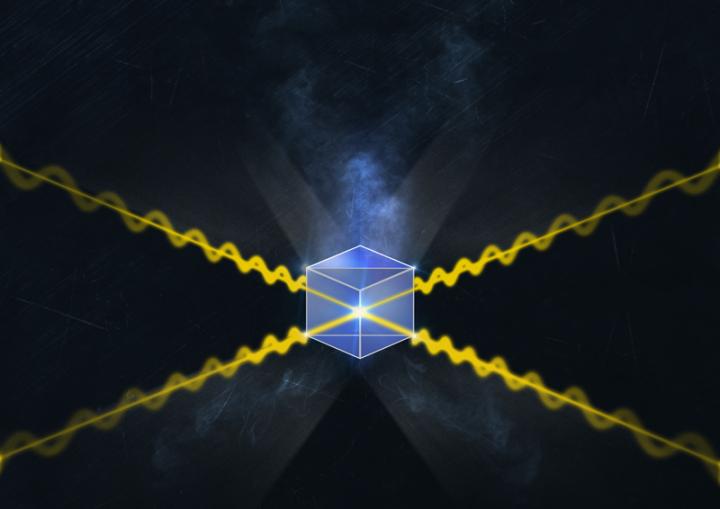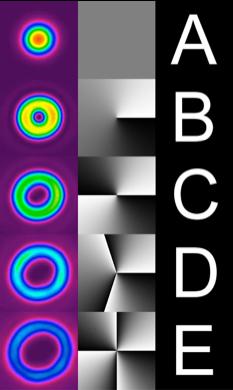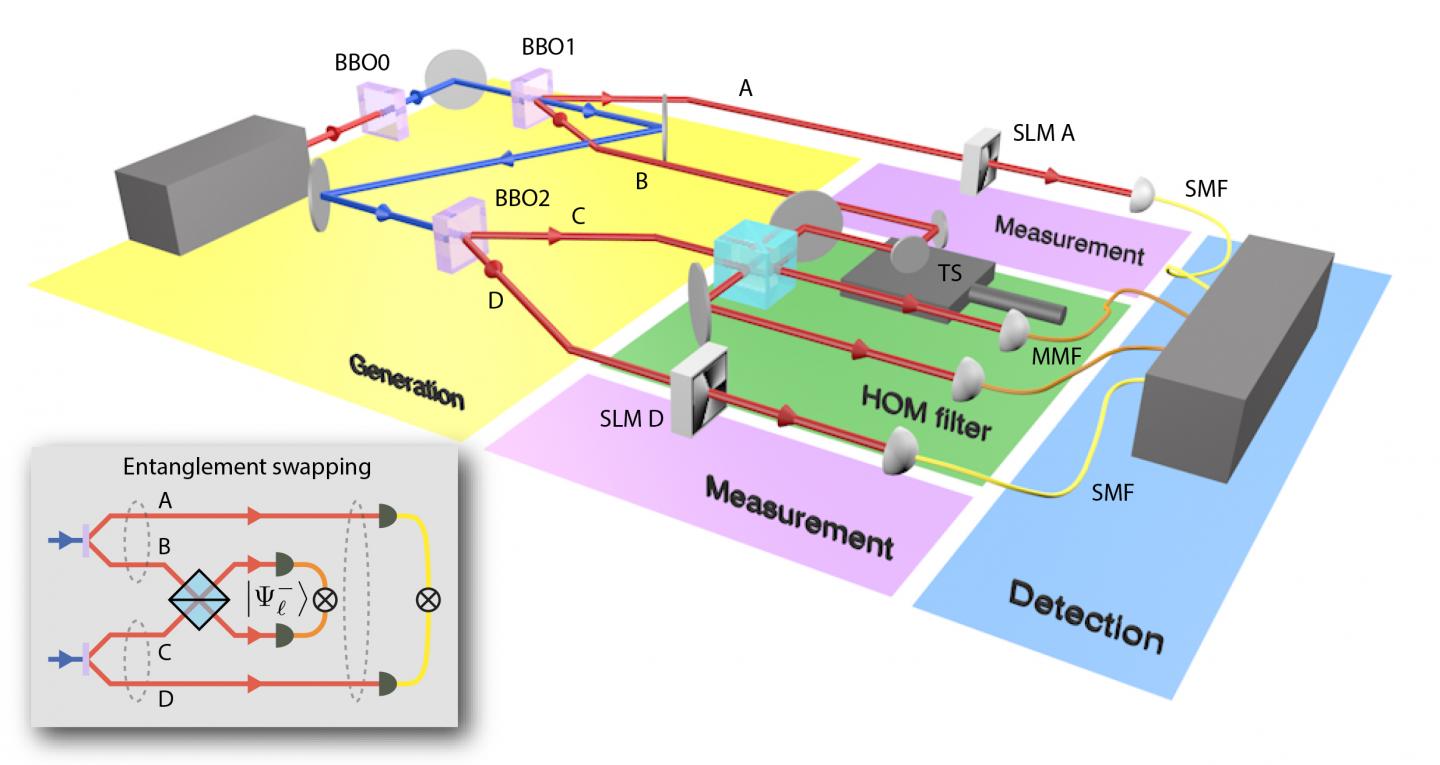Researchers have experimentally demonstrated photon entanglement swapping and teleportation for multiple orbital angular momentum (OAM) states of light.
When OAM is used as an information carrier, photon states can decay over long distances — thus a way to amplify the signal is needed. A quantum repeater, comparable to repeaters in classical optical fiber networks, allows the establishment of entanglement between two distant points without requiring one photon to travel the entire distance, thus reducing the effects of decay and loss.
Entanglement swapping — an integral ingredient of a quantum repeater — is used to generate remote quantum correlations between particles that have not interacted.

The core element of the quantum repeater is a cube of glass. Researchers input two independent photons; if they can detect two photons coming out the other side of the repeater, entanglement swapping can be performed. Courtesy of Wits University.
Experiments performed by a team at the University of the Witwatersrand showed that quantum correlations could be established between previously independent photons, and that this could be used to send information across a virtual link. The team did not distinguish between different antisymmetric states in their experiments. Thus, entanglement swapping occurred for several thousand pairs of spatial light modes simultaneously.

An alphabet of OAM modes. The light can be twisted multiple times to create a high-dimensional alphabet. Courtesy of Wits University.

For all of the subspaces considered, researchers measured a final concurrence greater than zero, indicating that the swap was successful for multiple OAM subspaces. For each subspace, researchers obtained an average fidelity of 80 percent between the reconstructed state and the maximally entangled antisymmetric state.
The approach could pave the way for high bit-rate, secure, long distance high-dimensional quantum communication.
While quantum communication has been demonstrated using two-level systems to carry information, the use of high-dimensional systems would allow more information to be encoded per particle. This work could be the first step toward building a quantum repeater with spatial modes of light, important for broadband long-distance quantum communication. The team further believes that photon entanglement could find applications in remote state engineering, remote ghost imaging and multiparty quantum key distribution.

A schematic of the experiment. Four photons were created, one pair from each entanglement source (BBO). One from each pair (B and C) were brought together on a beam splitter. When all four photons were measured together, photons A and D, which previously where independent, were entangled. Courtesy of Wits University.
The research was published in Nature Communications (doi:10.1038/s41467-017-00706-1).